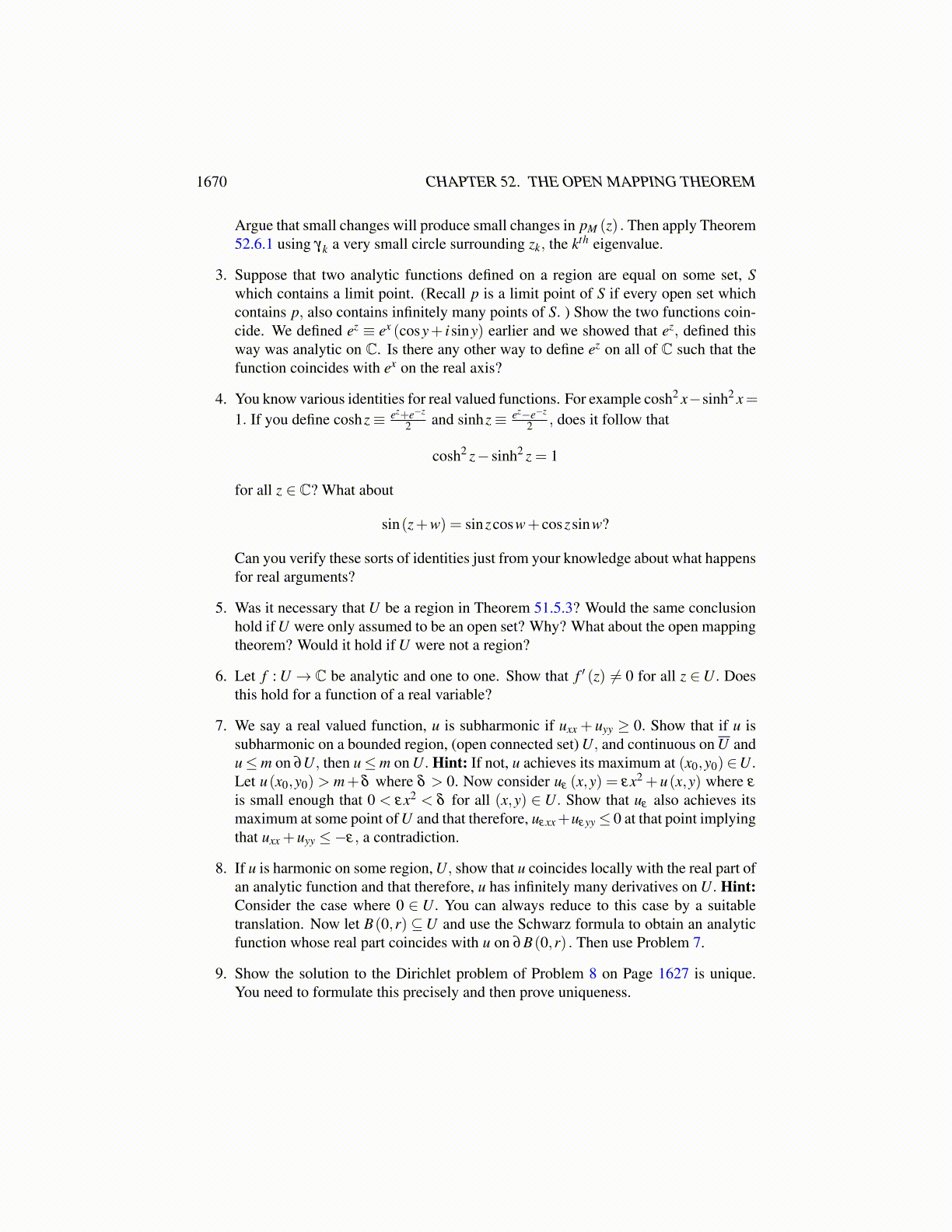
1670 CHAPTER 52. THE OPEN MAPPING THEOREM
Proof: Denote by A(t) the matrix(
ati j
)where if i ̸= j, at
i j = tai j and atii = aii. Thus to
get A(t) we multiply all non diagonal terms by t. Let t ∈ [0,1] . Then
A(0) = diag(a11, · · · ,ann)
and A(1) = A. Furthermore, the map, t → A(t) is continuous. Denote by Dtj the Ger-
schgorin disc obtained from the jth row for the matrix, A(t). Then it is clear that Dtj ⊆ D j
the jth Gerschgorin disc for A. Then aii is the eigenvalue for A(0) which is contained in thedisc, consisting of the single point aii which is contained in Di. Letting K be the connectedcomponent in Σ for Σ defined in Theorem 52.7.4 which is determined by aii, it follows byGerschgorin’s theorem that K ∩σ (A(t)) ⊆ ∪n
j=1Dtj ⊆ ∪n
j=1D j = Di ∪(∪ j ̸=iD j
)and also,
since K is connected, there are no points of K in both Di and(∪ j ̸=iD j
). Since at least one
point of K is in Di,(aii) it follows all of K must be contained in Di. Now by Theorem 52.7.4this shows there are points of K∩σ (A) in Di. The last assertion follows immediately.
Actually, this can be improved slightly. It involves the following lemma.
Lemma 52.7.6 In the situation of Theorem 52.7.4 suppose λ (0) = K0∩σ (A(0)) and thatλ (0) is a simple root of the characteristic equation of A(0). Then for all t ∈ [0,1] ,
σ (A(t))∩K0 = λ (t)
where λ (t) is a simple root of the characteristic equation of A(t) .
Proof: Let S≡
{t ∈ [0,1] : K0∩σ (A(s)) = λ (s) , a simple eigenvalue for all s ∈ [0, t]} .
Then 0 ∈ S so it is nonempty. Let t0 = sup(S) and suppose λ 1 ̸= λ 2 are two elementsof σ (A(t0))∩K0. Then choosing η > 0 small enough, and letting Di be disjoint discscontaining λ i respectively, similar arguments to those of Lemma 52.7.3 imply
Hi ≡ ∪s∈[t0−η ,t0]σ (A(s))∩Di
is a connected and nonempty set for i = 1,2 which would require that Hi ⊆ K0. But thenthere would be two different eigenvalues of A(s) contained in K0, contrary to the definitionof t0. Therefore, there is at most one eigenvalue, λ (t0) ∈ K0 ∩σ (A(t0)) . The possibilitythat it could be a repeated root of the characteristic equation must be ruled out. Supposethen that λ (t0) is a repeated root of the characteristic equation. As before, choose a smalldisc, D centered at λ (t0) and η small enough that
H ≡ ∪s∈[t0−η ,t0]σ (A(s))∩D
is a nonempty connected set containing either multiple eigenvalues of A(s) or else a singlerepeated root to the characteristic equation of A(s) . But since H is connected and containsλ (t0) it must be contained in K0 which contradicts the condition for s ∈ S for all theses ∈ [t0−η , t0] . Therefore, t0 ∈ S as hoped. If t0 < 1, there exists a small disc centeredat λ (t0) and η > 0 such that for all s ∈ [t0, t0 +η ] , A(s) has only simple eigenvalues in